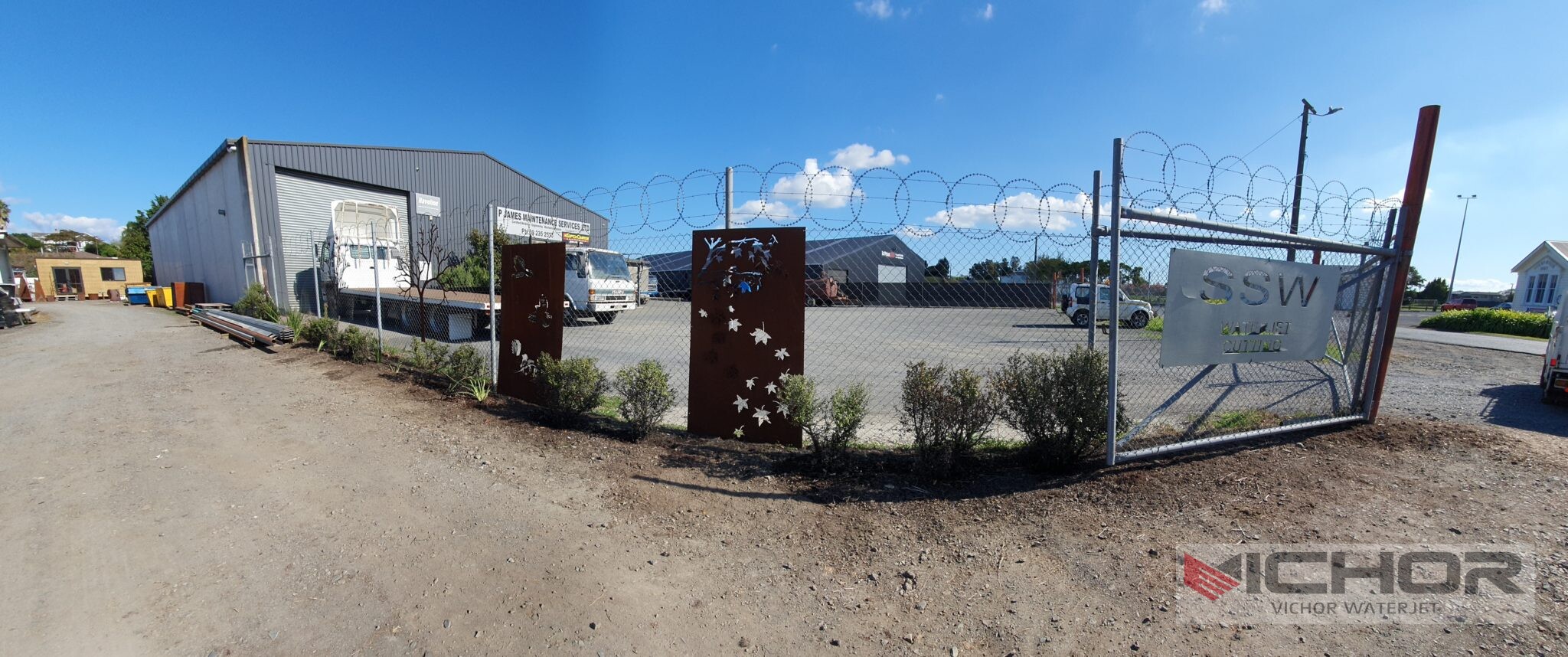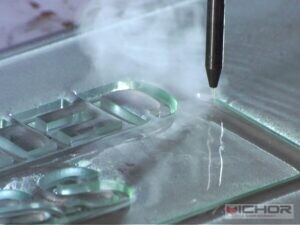
7 Key Factors That Truly Determine Your Water Jet Cutting Cost Per Inch
If you’re researching manufacturing methods for your project, you’ve likely stumbled upon a critical question: “How much does waterjet cutting actually cost?” More specifically, you’re probably searching for a clear answer on the water jet cutting cost per inch. This is the golden metric that allows engineers, designers, and fabricators to compare pricing, budget accurately, and make informed decisions.
However, a simple Google search often leads to frustration. You might find vague estimates ranging from $1 to $30 per inch, leaving you more confused than before. The truth is, there is no single, universal price. The water jet cutting cost per inch is a dynamic figure shaped by a complex interplay of factors. Understanding these variables is the key to unlocking accurate quotes and maximizing the value of your investment. This comprehensive guide breaks down the seven most critical elements that determine your final price, empowering you to speak the language of vendors and optimize your designs for cost-efficiency.
The Foundational Model: How is Water Jet Cutting Cost Per Inch Calculated?
Before diving into the factors, it’s essential to understand the basic pricing models used by waterjet service providers. Most shops calculate the water jet cutting cost per inch using a formula that combines a fixed “pierce” or “setup” cost with a variable “cutting” cost.
Piercing Cost: This is a fixed fee applied every time the jet needs to start a new cut, whether it’s piercing a new part or moving to an internal feature. Piercing is stressful on the machine and consumes more time and abrasive than the actual cutting motion. A typical pierce might cost between $0.25 and $1.00 each. This is why nested parts with many internal holes will have a higher total cost than a simple outline.
Cutting Cost (Cost per Linear Inch): This is the variable cost for every linear inch the machine cuts. It is typically quoted in dollars per linear inch ($/in). This rate is where the factors we will discuss (material, thickness, etc.) come into play.
The Total Cost Formula:
Total Job Cost = (Number of Pierces × Pierce Cost) + (Total Linear Inches Cut × Cost Per Inch) + Material Cost (+ Setup Fee)
Therefore, when you request a quote, the provider will need your DXF or DWG file to calculate the exact total linear inches of cutting and the number of pierces required. A simple part with one pierce and 100 inches of cutting will have a vastly different water jet cutting cost per inch average than a complex part with 50 pierces and the same 100 inches of cutting.
1. Material Type and Thickness: The Primary Cost Drivers
This is the most significant factor influencing the water jet cutting cost per inch. Waterjets can cut almost anything, but the hardness and density of the material directly determine the cutting speed.
Material Hardness/Density: Softer, less dense materials are cheaper to cut. The abrasive jet moves through them quickly, consuming less time, abrasive, and energy.
Low Cost per Inch: Aluminum, mild steel, rubber, foam, plastics.
Medium Cost per Inch: Stainless steel, copper, brass.
High Cost per Inch: Titanium, tool steels (e.g., AR400, Hardox), Inconel, ceramics, and thick granite.
Material Thickness: Thickness has a massive, non-linear impact on cost. Doubling the material thickness more than doubles the cutting time. This is because the jet must work harder to erode material all the way through a deeper channel. Cutting 2-inch thick steel is significantly slower and more expensive than cutting 1/2-inch thick steel. Providers often have “step tables” in their quoting software that adjust the water jet cutting cost per inch based on the exact material and thickness combination.
2. Abrasive Consumption: The Largest Variable Expense
Garnet abrasive isn’t just a component of the process; it’s the single largest ongoing consumable cost for any waterjet operation, directly tied to the water jet cutting cost per inch.
Consumption Rate: A waterjet can consume between 0.8 to 1.5 pounds of abrasive per minute. The harder and thicker the material, the higher the abrasive flow rate required to cut it effectively.
Abrasive Quality and Cost: The price of garnet can fluctuate based on quality and source. High-quality, properly sized garnet cuts more efficiently but costs more upfront. However, using cheap, low-quality abrasive can lead to slower cutting speeds and increased wear on other components (like the nozzle), ultimately raising the overall water jet cutting cost per inch.
Impact on Quote: Service providers factor the cost of abrasive directly into their per-inch rate. Jobs that require longer cutting times on hard materials will inherently consume more garnet, driving up the price.
3. Operational Overheads: Machine Time, Power, and Wear
The water jet cutting cost per inch must also cover the shop’s operational expenses, which are largely a function of time.
Machine Time (Hourly Rate): Every minute the machine is running incurs costs. Providers calculate an hourly machine rate that covers:
Depreciation: The cost of the machine itself.
Labor: The operator’s time to set up, run, and monitor the job.
Power: Waterjet pumps are powerful and draw a significant amount of electricity.
Facility Costs: Rent, insurance, and other overheads.
Maintenance: Regular servicing and unexpected repairs.
Since cutting speed dictates machine time, a slower-cutting job (due to thick/hard material) will have a higher water jet cutting cost per inch to cover this higher hourly cost.
Consumable Wear: The intense process wears down components quickly. The sapphire orifice, tungsten carbide mixing tube, and high-pressure pump seals are all replaced regularly. Their cost is amortized over the inches of cutting performed, meaning difficult jobs that accelerate wear will have a slightly higher cost to account for this.
4. Part Geometry and Complexity: It’s Not Just About Length
You can’t simply measure the perimeter of a part and multiply it by a standard rate. Complexity is a huge pricing factor.
Number of Pierces: As mentioned, each pierce adds a fixed cost. A intricate filigree design with hundreds of small holes will have a high total pierce cost.
Tight Corners and Small Details: Cutting sharp corners requires the machine to slow down significantly to maintain accuracy and prevent overcutting. This increased time on a complex path raises the water jet cutting cost per inch for that specific section of the cut.
Tolerance and Quality Requirements: If your project requires exceptionally tight tolerances (e.g., ±0.005″ or better) or a superior edge finish, the operator may need to use a slower cutting speed or multiple “passes” (e.g., a trim cut), which increases the time and cost.
Nesting Efficiency: How parts are arranged on a sheet of material affects cost. A service provider can nest multiple jobs together to maximize material usage. A single, simple part that doesn’t nest well may have a higher effective water jet cutting cost per inch due to wasted material.
5. Volume and Order Considerations: How Quantity Lowers Cost
Economies of scale apply directly to waterjet cutting. The water jet cutting cost per inch is almost always lower for larger production runs.
Amortization of Fixed Costs: The fixed costs—like setup, programming, and file preparation—are spread out over a greater number of parts. The cost of a single pierce becomes negligible when it’s divided by 100 parts instead of 1.
Optimized Nesting: With a higher quantity of identical parts, the shop can create an extremely efficient nesting pattern on the material sheet, minimizing waste and maximizing the number of parts per hour.
Material Buying Power: For very large orders, the shop can purchase full-size plates at a better price, some of which may be passed on as savings to you.
Always ask about volume discounts. Cutting 100 parts will have a significantly lower water jet cutting cost per inch than prototyping a single unit.
How to Get an Accurate Quote and Potentially Reduce Your Cost
Now that you understand the factors, you can be a more informed buyer.
To Get the Best Quote:
Provide a Clean CAD File: A ready-to-cut DXF or DWG file eliminates guesswork and processing time for the shop.
Specify Exactly: Clearly state the material type (e.g., “6061 Aluminum”), thickness, tolerance, and required quantity.
Ask About Their Rates: Inquire about their pierce cost and how they calculate the water jet cutting cost per inch for your specific material.
To Reduce Your Project’s Cost:
Choose the Right Material: If possible, use a softer, easier-to-cut material.
Design for Manufacturing (DFM):
Minimize the number of holes and internal cutouts to reduce pierces.
Avoid unnecessarily tight tolerances.
Use fillets instead of sharp corners where possible to allow for faster cutting speeds.
Group Orders: Combine multiple projects into a single order to benefit from volume pricing.
Discuss Nesting with Your Provider: If your parts don’t need to be cut from a pristine sheet, ask if they can be nested into leftover space from another job, potentially saving on material costs.
The water jet cutting cost per inch is not a mystery. It is a logical calculation based on the physical demands of your project and the operational economics of the machine shop. By understanding the seven key factors—material properties, abrasive use, operational overhead, part complexity, order volume, and the quoting model—you move from being a passive recipient of a quote to an active, knowledgeable partner. You can now design for cost-efficiency, ask the right questions, and accurately compare quotes to ensure you receive the best possible value for your precision waterjet cutting project.
continue reading
Related Posts
- 1371 words6.9 min read
- 1449 words7.3 min read



